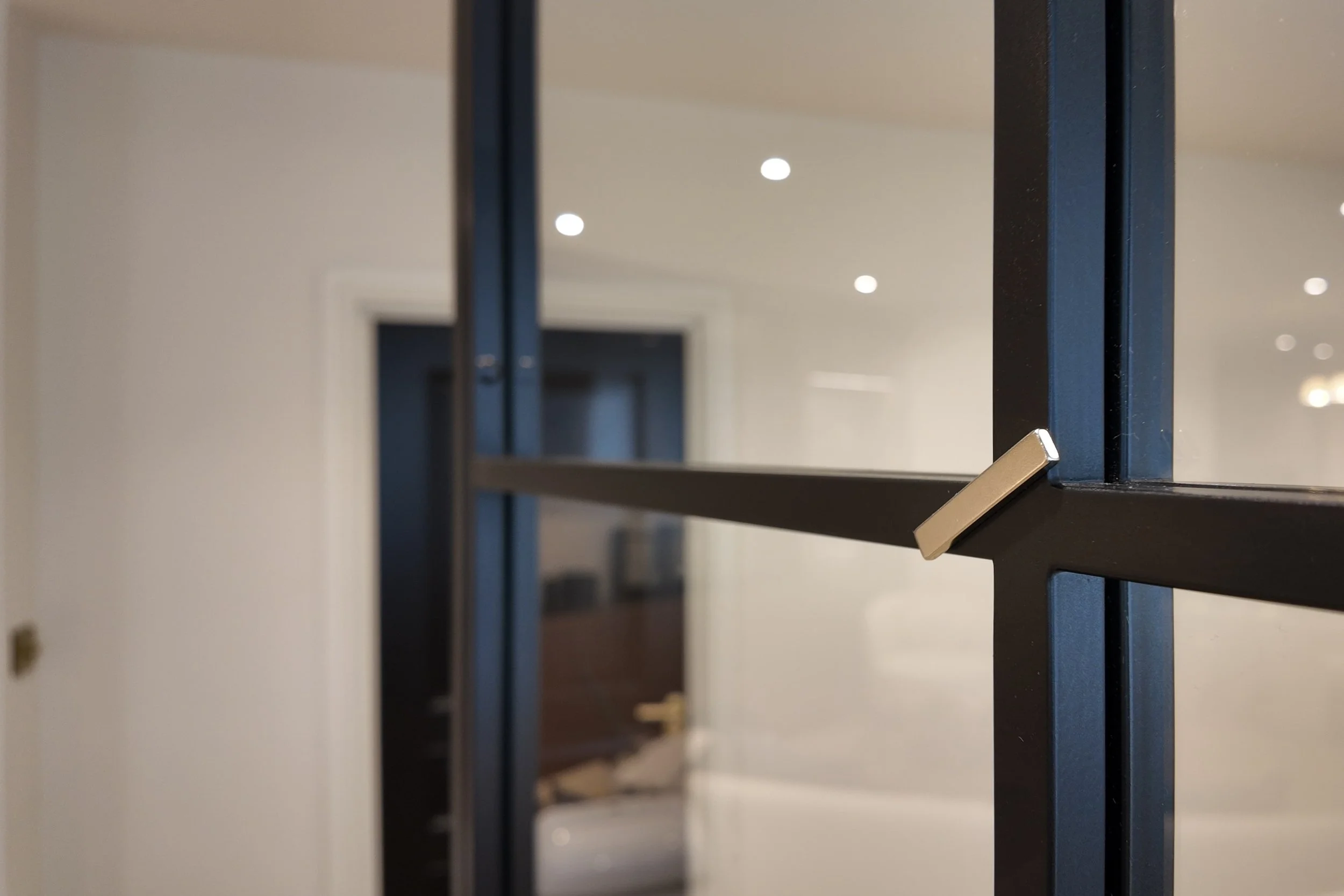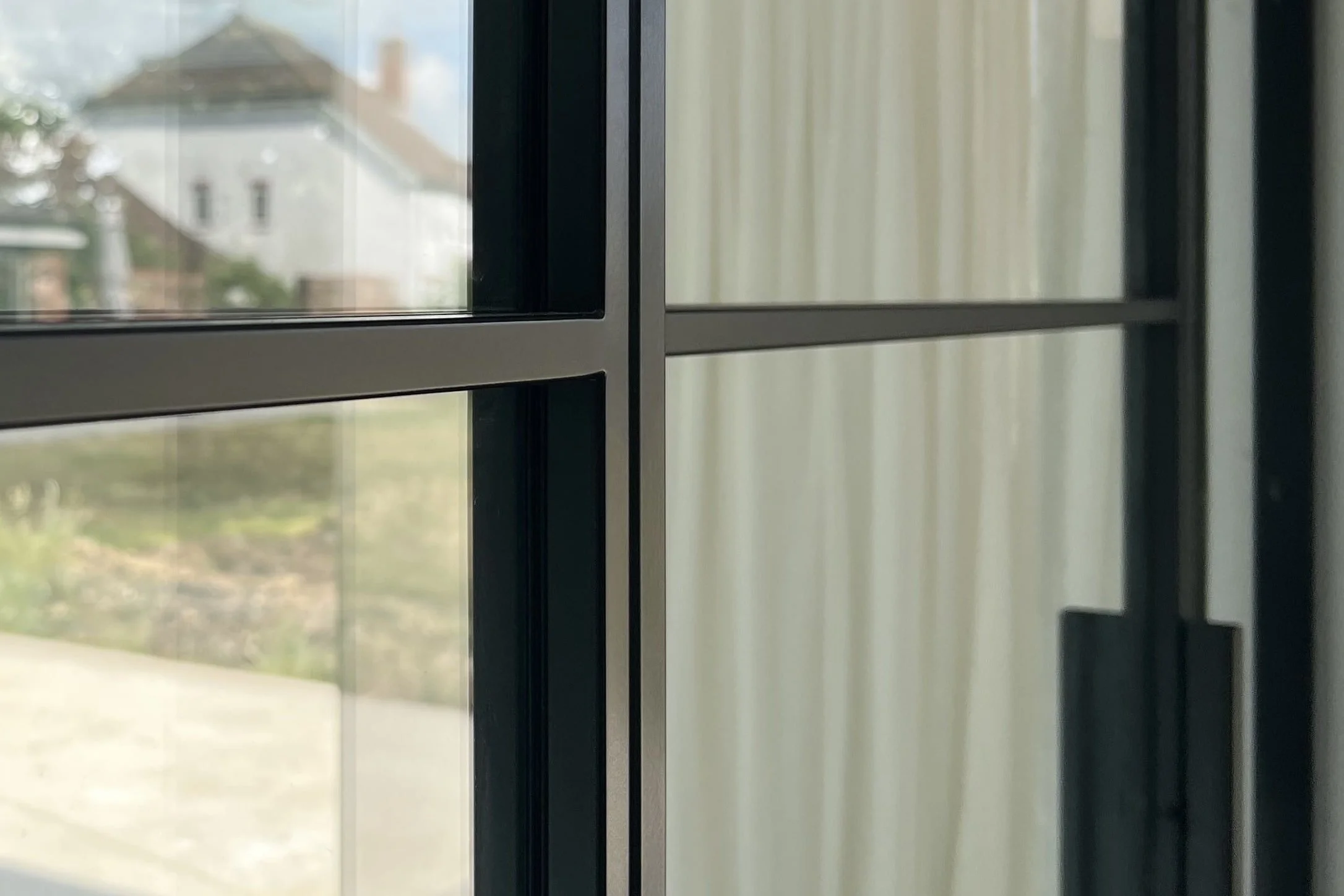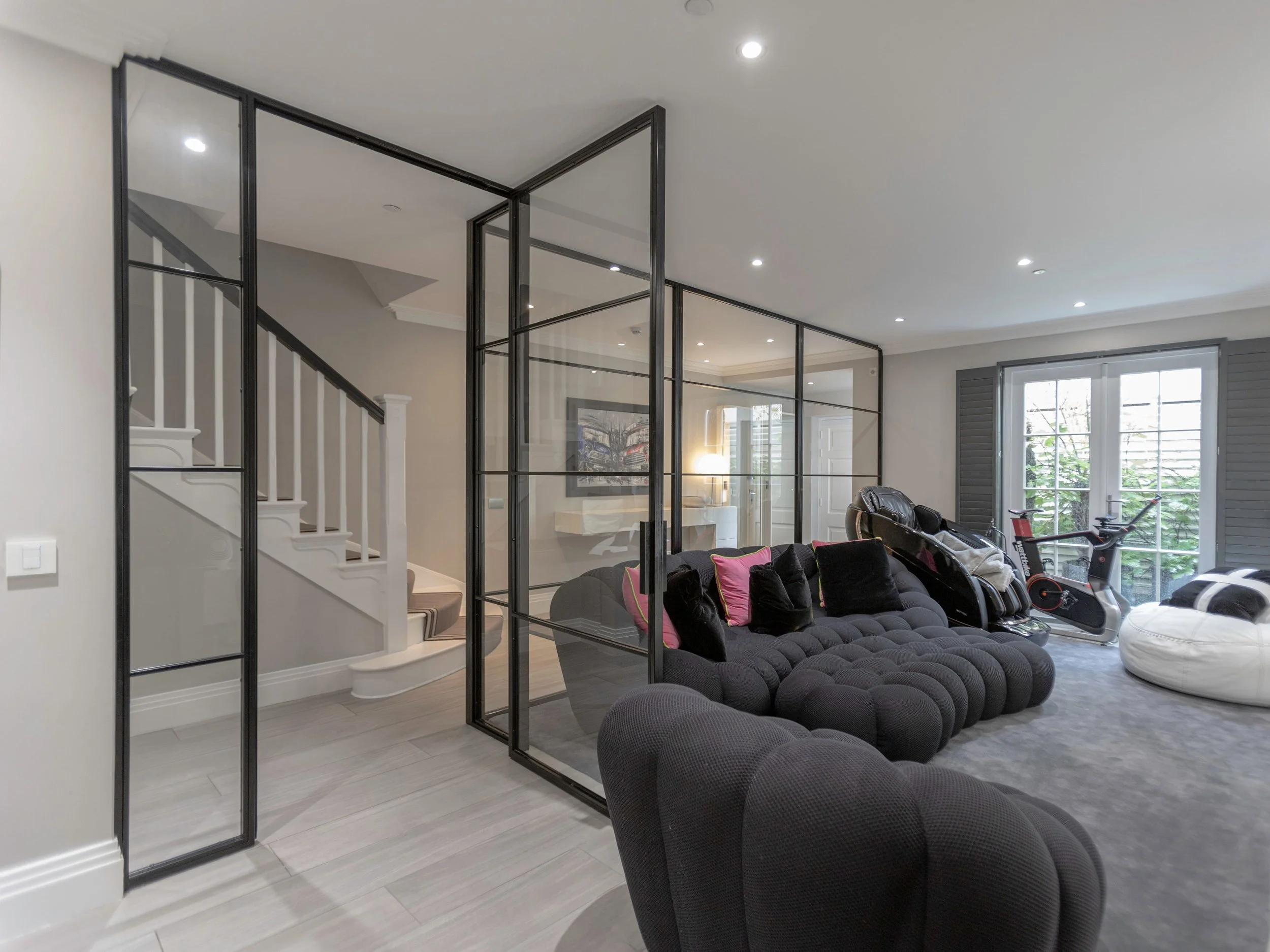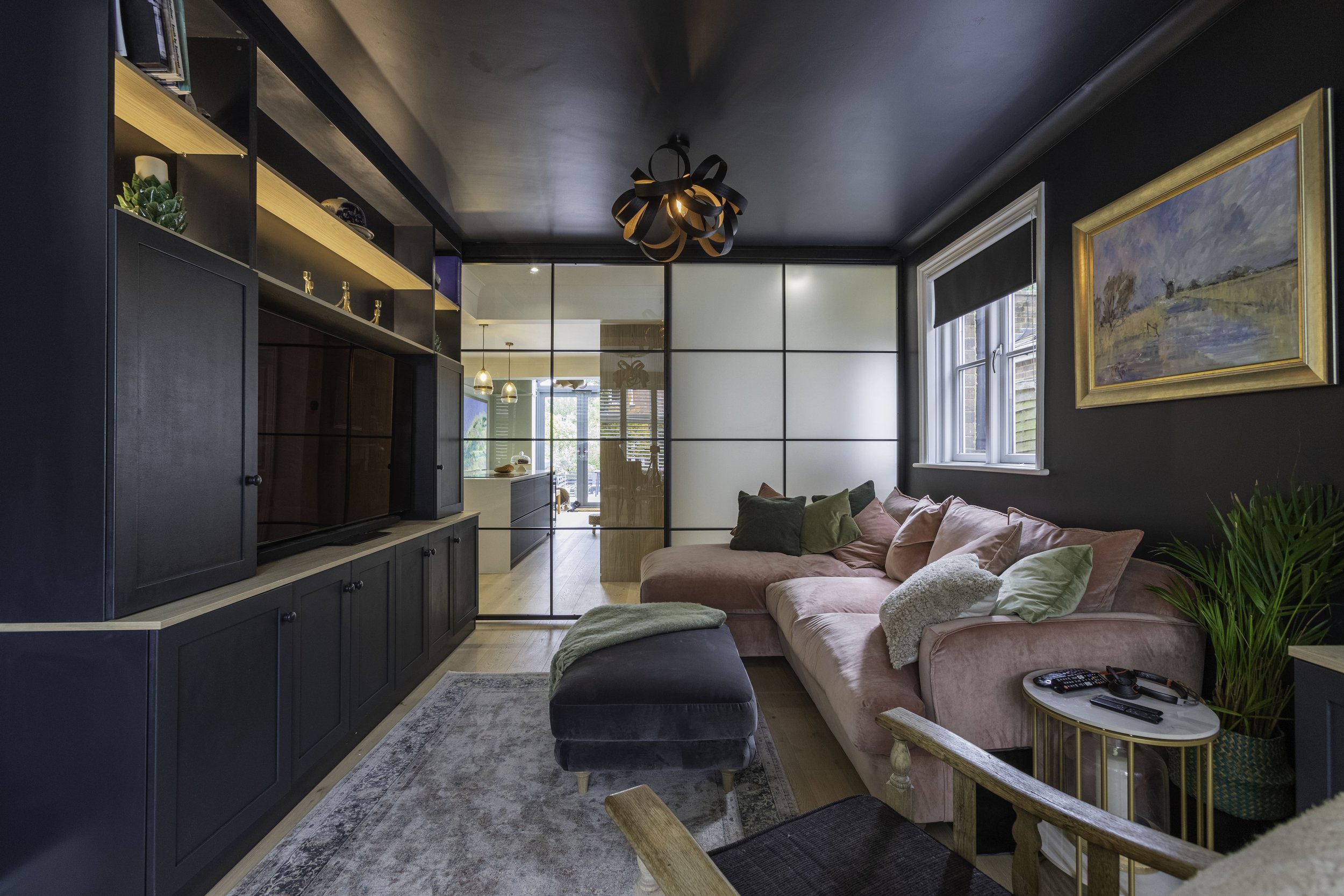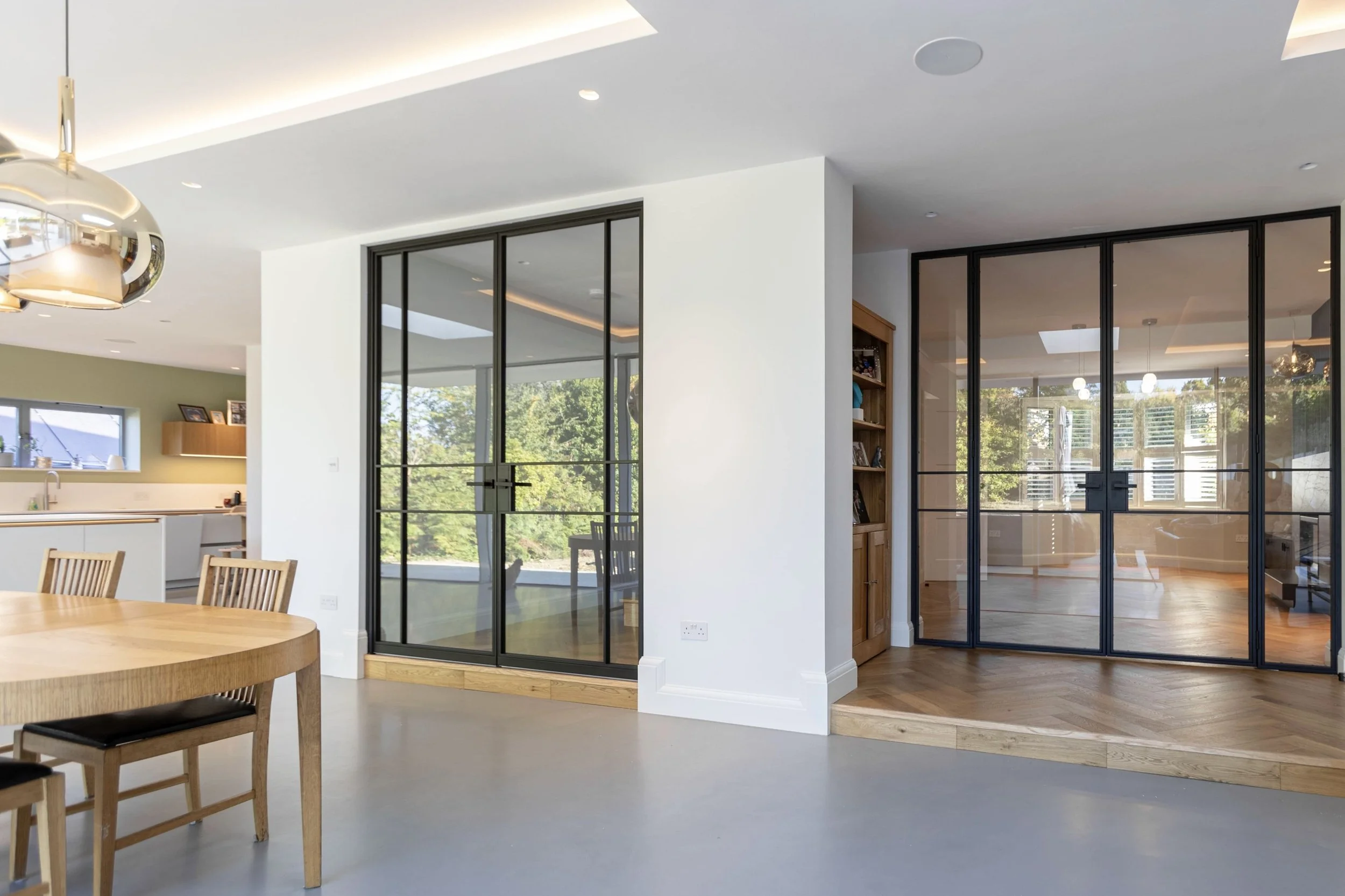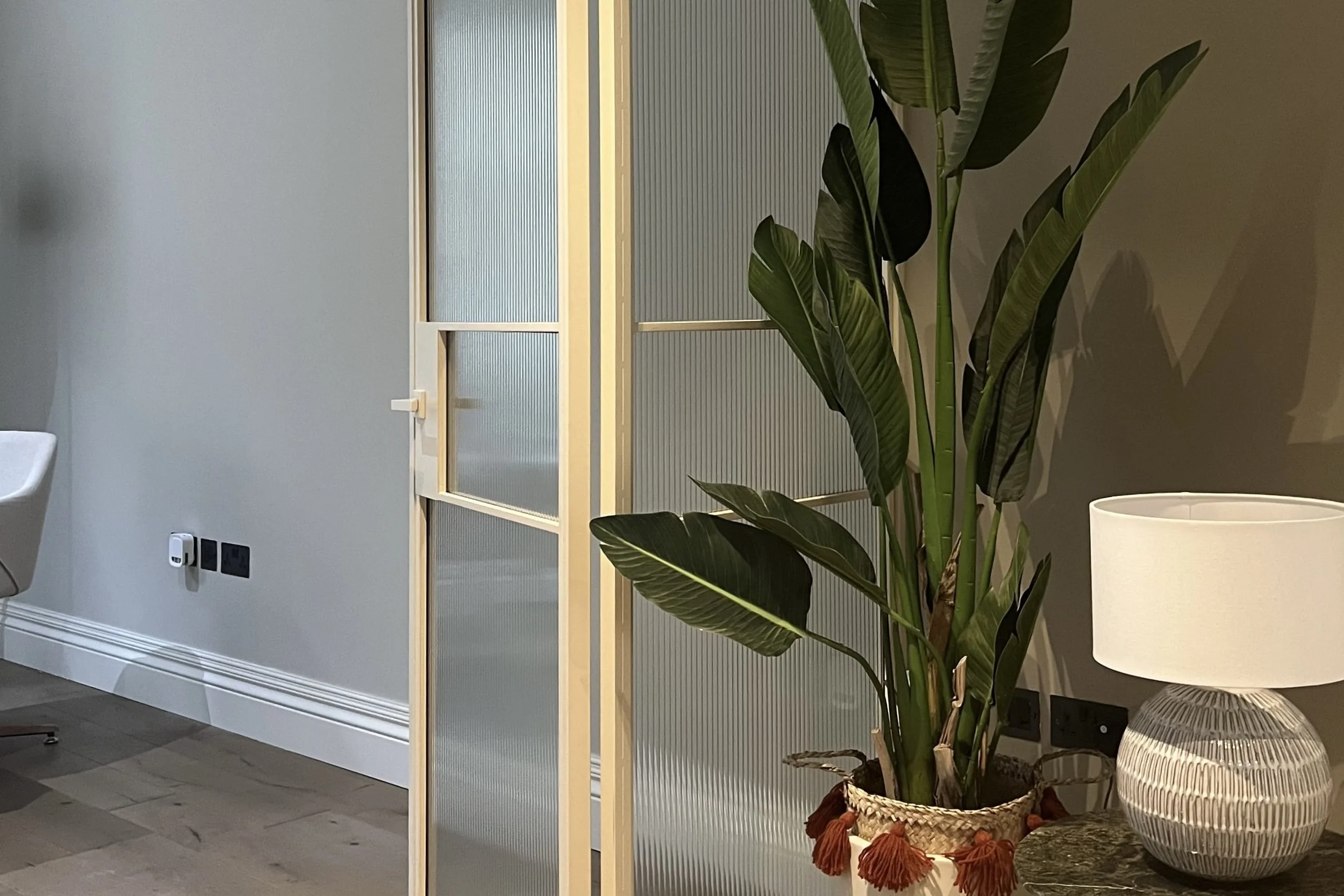Steel vs ‘Steel-Look’: A Buyer’s Field Guide
Introduction: why this guide matters
Interior doors set the tone for how a home feels and functions. And while many products look similar in photographs, they often behave very differently in daily life; such as, how solid they feel, how stable they remain, how much light they pass, how quietly they operate, and how they age. The market is now full of “steel-look” systems—typically aluminium or mixed constructions designed to imitate the appearance of steel.
This field guide shows you, in plain language, how to tell real welded steel from lookalikes. You’ll learn quick tests you can do on a showroom visit, how to read corners and meeting stiles, why bar and bead construction matters (including our distinctive InoCross20 doors, featuring 15 × 15 mm bars, welded to a 15 × 15 mm bead), and how to judge overall value beyond the first quote.
If you’re comparing options, keep these pages open for reference as you read:
Explore the range: Collections
Start with a type: Steel Single Doors · Double Door Sets · Sliding Doors · Room Dividers · Bi-Fold Doors
Need a rated assembly? Fire-Rated Internal Doors & Screens
Ready to brief? Enquire Today
Why the confusion exists
Photography compresses differences. In an image, thin bars, thick bars and adhesive strips can appear similar. In person, the depth, shadow line and edge crispness are obvious.
Marketing language is elastic. Phrases like “industrial style”, “heritage grid” or “steel-inspired” can obscure the actual material and fabrication.
Mixed systems are common. Some products use a steel outer frame but aluminium bars and beads. Others are entirely aluminium with applied trims. The result is a different feel and lifespan to real steel.
Short-term pricing hides long-term costs. Lower initial price can mean more adjustments, visible joints and earlier replacement—especially on larger or high-traffic openings.
Key takeaway: you’re not just buying a look. You’re buying structure, stability and tactility.
Quick tests you can do (in seconds)
The magnet test (simple and revealing)
Bring a small magnet and test multiple points:
Outer frame
Glazing bead
Bars (mullions/transoms)
Hinges & cover plates
Sticks? Steel. Doesn’t stick? Typically aluminium.
Tip: don’t test only the big frame, some mixed systems hide aluminium in the bars and beads.
Find the joints
Look for screw points, clip lines and visible joints, especially at corners, meeting stiles and hinge zones. Welded steel is a single, continuous assembly; modular systems often show telltale joins.
Proportions at stress points
Compare thickness at corners, hinges and meeting edges. Aluminium tends to need deeper, bulkier sections to stay stable. Real steel maintains slimmer, consistent sightlines where it counts.
The “feel” test
Open and close the door. Listen for quiet, damped motion. Note if the leaf feels planted and precise, or light and flexy. Tactility is a strong indicator of build quality.
Welded steel vs screw/clip assemblies
Fully welded steel frames:
One-piece integrity: corners don’t drift, intersections stay true, sightlines remain aligned.
Visual calm: no caps or disconnects; bars look engineered, not applied.
Longevity: less adjustment over time; coatings wear more predictably on a stable substructure.
Screw/clip assemblies (often aluminium):
Multiple components: more points to loosen or creak with use.
Visual noise: visible joints and thicker profiles disrupt the grid.
Ageing: higher likelihood of sag, misalignment or rattles, particularly on tall doors and wide dividers.
If you value long, quiet service and design clarity, welded steel wins.
Sightlines & geometry: how to read a door like a designer
Corners
A welded corner reads as a crisp, mitred junction. Lookalikes often reveal rounded extrusions, visible fixings or plastic caps.
Hinges
Steel allows slimmer hinge zones while keeping stability; aluminium may thicken the leaf or stile to carry weight.
Meeting stiles
On double doors, the meeting edge should feel slim and disciplined—especially important for photography and long views.
Bars & intersections
The grid should look three-dimensional, with clean shadow lines. For added depth, avoid systems where bars appear as flat strips or adhesive trims.
If you want sightlines that calm a space, start with door families that keep a single, repeatable bar logic across Single, Double, Sliding and Room Divider combinations.
Why bar & bead construction matters
Our InoCross20 doors and screens are distinctive because of their 15 × 15 mm bar welded to a 15 × 15 mm bead, constructed from true three-dimensional steel profile. Benefits:
Slim but structural: fine divisions without feeling flimsy.
Depth & shadow: bars read as real steel, not surface trims.
Higher glass-to-frame ratio: more openness, better long views.
Consistency: welded intersections stay crisp over time.
When you see a door that looks unusually calm and refined in person, it’s often the frame and bar ratio doing the heavy lifting.
If you’re weighing up layouts that show off a refined grid, explore:
Steel Single Doors · Double Door Sets · Room Dividers
Note: If flat bars are preferred, our InoCrossSculpture offers a different look with 20 mm bars, a slightly stronger graphic line that carries well on wide spans and in photography.
Glass is not the equaliser
It’s easy to assume that “glass is glass”, so the frame won’t matter. In reality, frame material and fabrication dictate how the door behaves:
Stability: welded steel keeps panes square and seals consistent.
Acoustics & tactility: a planted frame supports quieter, smoother operation.
Edge detail: clean, even reveals and bead lines are a product of a stable substructure.
Finish behaviour: powders and specialist finishes read differently on a stable, welded steel substrate vs modular assemblies.
Choose the frame and configuration first, then fine-tune the design, light and privacy with glass (clear, reeded, frosted, laminated, etc.). For use-case ideas, see Room Dividers and Sliding Doors.
Longevity & value: total cost of ownership
The purchase price is only part of the story. It is important to consider:
Adjustment cycles: modular systems often need more tweaks as components move and drop over time.
Finish lifespan: a stable, welded base is built to withstand the test of time.
Daily feel: doors used dozens of times per day should feel balanced and precise.
Look, resale & photography: refined sightlines not only look, but also photograph better, useful for listings and long-term value.
Avoided refits: robust doors reduce repair or replacement down the line.
If you plan to live with your doors for years, real steel pays back.
Where rated systems fit (and how to keep the look)
When projects require a fire rated assembly, InoCross20FR (E30) maintains slender sightlines and can be finished to match non-rated neighbours, so the whole suite reads as one idea. You’ll typically see lever/latch hardware, closers and specific seals per the test data.
Learn more: Fire-Rated Internal Doors & Screens
Mini case notes (real-world outcomes)
Twickenham (basement)
Single door with double-corner fixed screens. Result: brighter circulation and clear zoning without bulk.
→ See similar layouts: Room Dividers
Harpenden (kitchen ↔ snug)
Sliding leaf (clear) + side screen (opaque). Result: privacy where it’s needed, light where it matters; snug becomes a quiet retreat when closed.
→ Explore: Sliding Doors
Reigate (rated & non-rated)
E30 rated double set beside a non-rated suite with side screens. Result: one visual language, two performance briefs, aligned bars and finishes.
→ Rated solutions: Fire-Rated · Matching sets: Double Doors
Buyer’s spec checklist (copy/paste)
Material & build
Frame, bars and beads are steel (confirm with a magnet at all points)
Welded construction (inspect corners and intersections)
Sightlines & geometry
Consistent slim profiles at corners, hinges, meeting stiles
Bar logic defined (module chosen; avoid busy lattices)
Glass
Clear / reeded / frosted / laminated (as required per room)
Mix glass types for added effect
Hardware
Hinged: Trim (welded pull) or Guarded (lever/latch)
Sliding/pocket: Cup handle & edge pull; soft-close track; discreet floor guide
Rated sets: lever/latch, closer and seals per test
Finish
RAL powder coat (any RAL) or special powder (bronze/brass tones)
Living metal finish for feature pieces
Blackened steel (live finish) for added depth
Planning & install
Structural opening plumb, level, square; finished floor level confirmed
Pocket returns clear of services/sockets (for pocket sliders)
Handle heights are congruent across the room
Documentation & aftercare
Fire-rated: test data referenced and confirmed acceptable by building control
Finish care: guidance for maintenance
Finishes that behave beautifully in real homes
Choose finishes for light behaviour as much as for colour:
RAL coloured powder coat: any RAL; predictable, durable; match nearby external doors or kitchen elements.
Special powder coat: bronze/brass-inspired tones with the consistency and maintenance profile of powder.
Blackened steel (living finish): soft depth, low glare on camera; develops gentle character over time.
RAL powder coat: any RAL; predictable, durable; great to match any nearby elements.
Special powder coat: bronze/brass-inspired tones with the consistency and maintenance profile of powder.
Living metal finish: a full-frame metallic finish, ideal when the door is a focal element; striking with metal infill, such as kick plates.
Blackened steel: soft depth, low glare on camera; develops gentle character over time.
See how finishes sit within complete compositions: Collections · Samples & advice: Enquire Today
Common pitfalls (and easy fixes)
Being mis-sold fully or partially aluminum doors as steel doors.
Fix: apply a magnet to frames, bars, beads and hinges too.Over-barred grids.
Fix: choose a simple module; keep intersections out of key views.Head heights that don’t line through.
Fix: set alignment rules early; relate to windows, kitchen gables, stair heads.Pocket clashes with services.
Fix: plan the pocket zone early; reroute switches and sockets.Glossy finishes in bright rooms.
Fix: choose low-sheen or blackened for calm, camera-friendly surfaces.
Conclusion: buy the behaviour, not just the look
If you judge doors only by a photo, “steel-look” can seem close enough. In person—and over years of use—the differences are decisive. Welded steel delivers the stability, sightlines and tactility that make rooms feel composed, bright and easy to live with. Use the magnet test, inspect joints and proportions, and choose a bar logic that calms the elevation. You’ll feel the difference every day.
Explore: Collections
Choose a type: Single Doors · Double Doors · Sliding Doors · Room Dividers · Bi-Fold Doors · Fire-Rated
Ready to specify? Enquire Today
Ready to specify steel?
Enquire today to discuss your next project:
Submit an enquiry or call our team for a tailored consultation.
Let’s Talk
Whether you're renovating a home, specifying for a new build, or delivering a luxury interior for a client — we’re here to help.
At Joshua James, we work with architects, interior designers, homeowners and contractors across the UK to design and supply bespoke steel internal doors. Every door is crafted to exacting standards, tailored to suit each project’s vision, and built to stand the test of time.
If you're ready to elevate your next project with precision-made steel framed doors, let’s talk.

